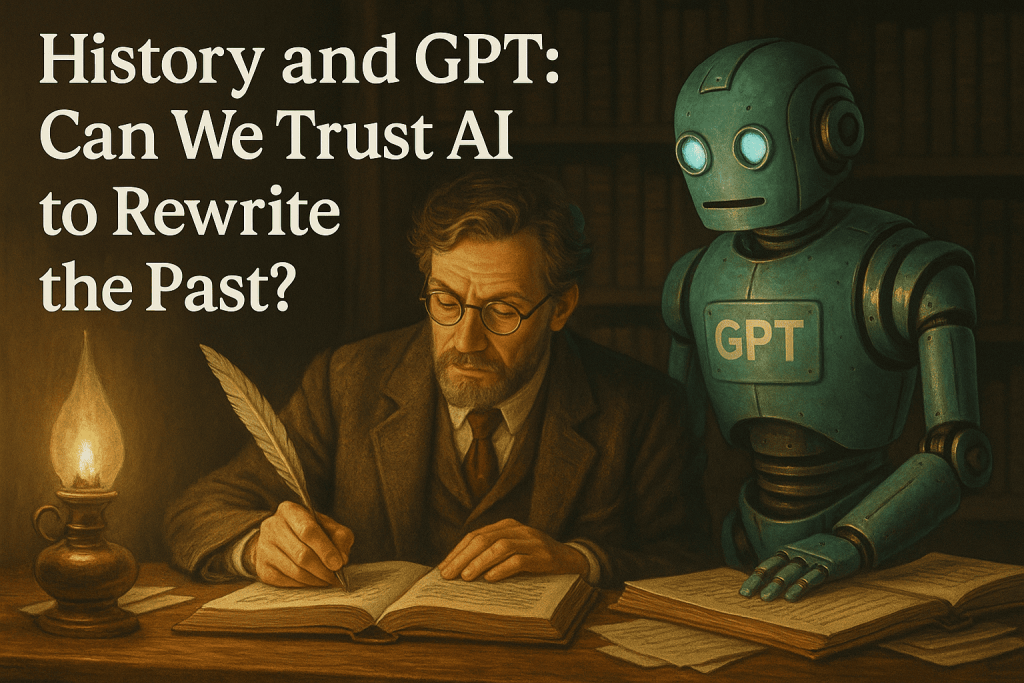Artificial intelligence has become a powerful tool in nearly every academic field, and history is no exception. Large language models such as GPT can rapidly summarize primary sources, translate ancient documents, and even generate engaging narratives that bring historical periods to life. Yet with this new capability comes an important question: can we trust AI to “rewrite” or reinterpret the past without distorting it?
AI as a Historical Research Assistant
Digitization projects around the world have produced millions of scanned letters, diaries, and government records. GPT-based tools sift through these archives in seconds, extracting dates, names, and themes that human researchers might overlook. A historian can feed GPT a trove of 19th-century newspaper articles, then ask the model to identify recurring social issues or track the rise and fall of political rhetoric. Such speed and scale transform how scholars formulate questions and test hypotheses.
Translation and transcription are equally transformative. GPT fine-tuned on medieval Latin or Ottoman Turkish can decipher and translate fragile manuscripts, making them accessible to a global audience. Previously obscure documents suddenly become searchable and analyzable, widening the field of historical inquiry.
Narrative Generation and Public Engagement
Beyond research, GPT is increasingly used to craft museum displays, virtual tours, and educational videos. By generating vivid prose that blends primary-source quotations with contextual explanations, AI helps curators reach diverse audiences. For younger learners, GPT can repackage complex topics into age-appropriate stories, sparking curiosity about the past.
Storytelling, however, introduces risk. When GPT “fills in the gaps” between sparse sources, it may blend fact with plausible but unverified conjecture. Without rigorous human oversight, these creative liberties can circulate as truth, shaping public memory in unintended ways.
The Problem of Hallucination and Bias
GPT does not truly know history; it predicts likely sequences of words based on patterns in its training data. If that data include misunderstood events or biased chronicles, the model will replicate those distortions. Worse, GPT occasionally fabricates citations or merges separate events, a phenomenon known as hallucination. A persuasive paragraph about a battle that never occurred can slip through peer review if historians are not vigilant.
Bias is equally concerning. Many historical archives overrepresent dominant cultures and underrepresent marginalized voices. A model trained on such material may unintentionally reinforce colonial perspectives or oppressive narratives. To mitigate this, researchers must diversify training datasets, explicitly flag contested interpretations, and maintain transparent audit trails of AI-generated content.
Verification Strategies
Scholars can adopt several safeguards when using GPT for historical work:
• Source tagging: Require GPT outputs to list the specific documents and passages that informed each claim, allowing fact-checking downstream.
• Human-in-the-loop editing: Historians should treat GPT drafts as preliminary sketches, subjecting them to the same citation standards and critical reading applied to human authors.
• Version control: Store AI prompts, model versions, and incremental edits in research repositories so future scholars can trace how conclusions were reached.
• Bias audits: Periodically test the model against known historical controversies to detect skewed or harmful outputs, then adjust training data accordingly.
Ethics of “Rewriting” History
Even with safeguards, the philosophical question remains: should AI play an active role in reshaping historical narratives? Some argue that GPT can democratize history by amplifying understudied stories and translating difficult texts. Others worry that algorithmic storytelling could erode the discipline’s foundations—critical interpretation, source criticism, and scholarly debate.
Ultimately, GPT should complement, not replace, human historians. Its speed and pattern-matching prowess make it an unparalleled assistant, but human judgment is essential for weighing evidence, recognizing nuance, and preserving ethical standards.
Conclusion
GPT offers historians unprecedented tools to explore the past, from rapid text analysis to engaging public outreach. Yet the same technology can inadvertently blur fact and fiction. By embracing transparency, rigorous verification, and collaborative oversight, scholars can harness AI’s strengths while guarding against its weaknesses. The goal is not to let GPT rewrite history unchecked, but to use it as an intelligent partner that helps us understand the complexity of human experience more fully—and more responsibly—than ever before.
Guardians of Memory: Balancing AI Innovation and Historical Truth



ai history rewriting seems unreliable… 🙄
lol gpts history rewrite is super sketchy
finding lost stories 🔥🔥